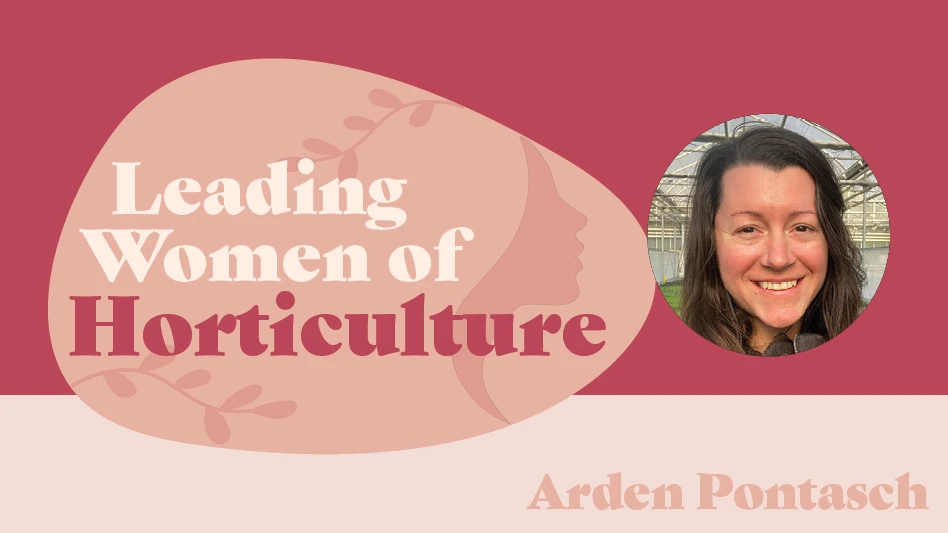
There are two sides to every business coin, and owners need to decide which slot their company will fit in best. Today, it seems more often than not you hear everyone screaming, “specialize, specialize, specialize.” The thought seems to be that you need to be highly focused and create a specific niche to succeed; you can’t be all things to all people. Be a propagation specialist or concentrate on natives, for instance.
So, while diversification and having a broad focus can be viewed as risky, and something only the “big boys” do, it is a business strategy that Blue Heron Farm has embraced. Having a horizontal scope instead of a vertical one in not only its product type, but also plant range and size, has been a successful business blueprint and it sets them apart from their competition.
Blue Heron Farm produces more than 900 types, forms and sizes of plants. The nursery’s business plan is based on developing partnerships with its customers and creating a production plan together.
“We have never been seduced by how much volume we produce or by the size of our nursery. We feel that there is a trust between us and the customers in that we will try to grow what they ask for, and in turn they will make their best efforts to buy it,” says Carlos Oliveira, general manager of Blue Heron Farm.
Diversify your portfolio
From a management or production point of view, it would be much easier to streamline production. But it’s been that exact diversity that has helped BHF to minimize the economic ups and down.
“When you do as many things as we do, something is always going badly,” Carlos says. “Sometimes it is B&B sales, or the price of grass seed is terrible, or the blueberry crop fails. But the other items that are doing well help keep the ship afloat.”
Additionally, he says one of their strengths is the willingness to try any plant whether it’s the newest selection or an old variety that has fallen out of favor, but it is still important for one of his customers.
“Well, I’ve always appreciated Blue Heron for the broad range of good quality nursery stock they provide,” says Bill Holiday, plant buyer for Devil Mountain Nursery in San Ramon, Calif. “They frequently have plants that I simply cannot find elsewhere, and have a wide range of containerized material. That is really important to the California market, because it is too hot and dry to depend on B&B material outside of the winter season.”
Selection and diversification is essential for brokers who represent multiple growers in different regions.
“I have been dealing with Blue Heron Farm since their inception into growing container nursery stock. When I started my own company in 2003, Blue Heron Farm was the first grower I contacted. Blue Heron’s large assortment and trusted quality makes them a go-to grower for me,” says John Schmidt of John D. Schmidt & Associates in Glenmoore, Pa.
Carlos is always willing to experiment with odd or unusual varieties. Once, he tried to graft two different types of dwarf crabapples on a single stem, with Coralburst on top and a Sargentina 24-inch below it. He could never quite get the growth to look balanced, so he ended that project.
“If you don’t fail miserably, you are not trying hard enough,” he says.
Another exotic plant Carlos grows is Ziziphus jujube ‘Sherwood,’ which reaches 25 feet and is a favorite of a Texas customer.

The production plan
Carlos admits that just like other nurseries, the recession affected their sales. However, BHF was still able to keep growing in part because owner Peter Dinsdale has always believed that you have to have enough production to have an impact; you can’t sell from an empty cart. And picking your partners helps, too, says Carlos.
“I’ve always wanted to be big enough to sell to the people that we wanted as customers, yet not be so big that we would have to sell to customers that we prefer not to deal with.”
Upon his arrival to Blue Heron Farm in 1992, Carlos added a small container area growing shrubs as a way to expand their offerings. Well, at least that was the stated plan. In reality, it was so that Carlos could grow a crop he was familiar with producing since he had limited experience with B&B trees. That expansion was followed by producing bare-root material and then creating a pot-in-pot area.
The bareroot area is used almost exclusively for flowering and shade trees along with some fruit trees and a few shrubs exclusively for their own use. The pot-in-pot area is primarily dedicated to trees with only a very small amount devoted to conifers. In addition to deciduous shade and ornamental trees, they also grow a lot of fruit and some nut trees such as multiple varieties of apples including many heirloom selections, as well as pears, plums, figs, jujubes, plums, cherries, persimmons, almonds and walnuts.
Besides woodies, BHF also dedicates growing space to producing small fruits such as blueberries, strawberries, blackberries, hardy kiwis and other can berries as well as hazelnuts (for fruit and nut production, not plant sales) plus grass seed and sugar beet seed.
Although edibles are not a big part of BHF’s production, they are still an important addition to the company’s offerings.
“In many cases edibles can also be very ornamental,” Carlos says. “Blueberries have fantastic fall color as do persimmons. Also, the espalier fruit trees are used against a fence, or to create a very attractive open hedge.”

Division of labor
With his two sons, Peter Dinsdale focuses most of his energy on the farming side of Blue Heron, which leaves the daily operation of the nursery to Carlos and his wife, Amie.
Amie handles most of the marketing responsibilities as well as overseeing inside and outside sales, and working with the container production and propagation managers. Carlos focuses more on the bare root, pot-in-pot and the B&B tree growing with each of those division managers. And Carlos works with the production manager, as well. Although Carlos does not have any real responsibility over the farming side, he jokes about being the unofficial strawberry and blueberry taster.
“Legacy is the best blueberry; it tastes more like a wild blueberry yet it has a nice balance of sweetness and acidity,” he says.
It’s true that Blue Heron Farm has been developed by plant enthusiasts. However, those same individuals also understand the need to be financially successful so they can support their plant habit. In fact, Carlos says that is their idea of sustainability.
When it comes to large financial decisions, that is a joint discussion and agreement between Carlos and Peter. Carlos says when he sees a need to expand or upgrade machinery or facilities, he presents his case to Peter who then will ask the same questions, “How does it benefit the nursery?” and “Is there a real need for it?” Peter is adamant that while he is willing to spend money on things that generate income, he is against unnecessary overhead, Carlos says.
For more: www.bhfnursery.com

Explore the August 2017 Issue
Check out more from this issue and find your next story to read.
Latest from Nursery Management
- Trends: Proven Winners 2025 perennial survey shows strong demand
- Online registration opens for the 2025 Farwest Show
- Sustainabloom launches Wholesale Nickel Program to support floriculture sustainability
- Plant breeding as an art
- Society of American Florists accepting entries for 2025 Marketer of the Year Contest
- American Horticultural Society welcomes five new board members
- Get to know Christopher Brown Jr. of Lancaster Farms
- American Floral Endowment establishes Demaree Family Floriculture Advancement Fund





